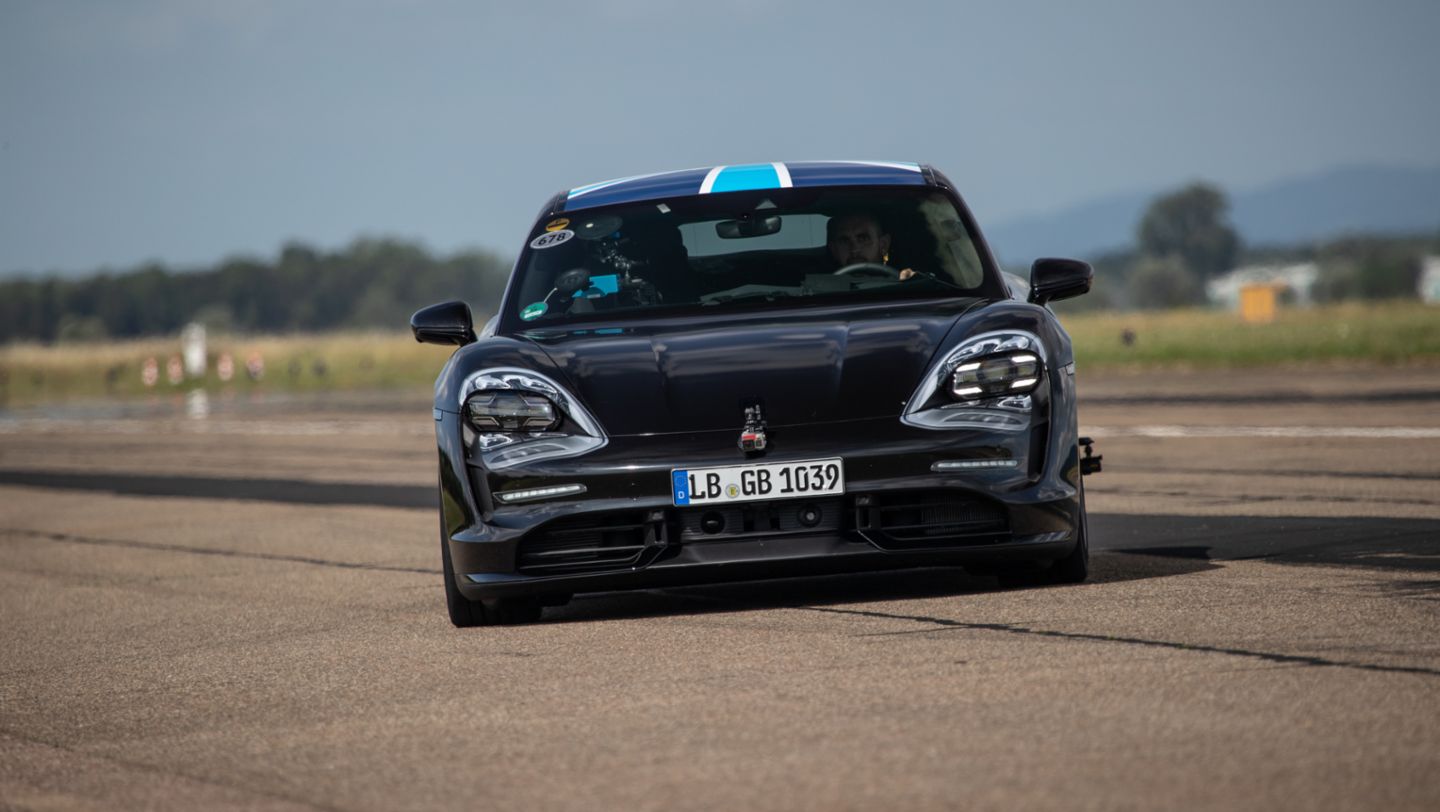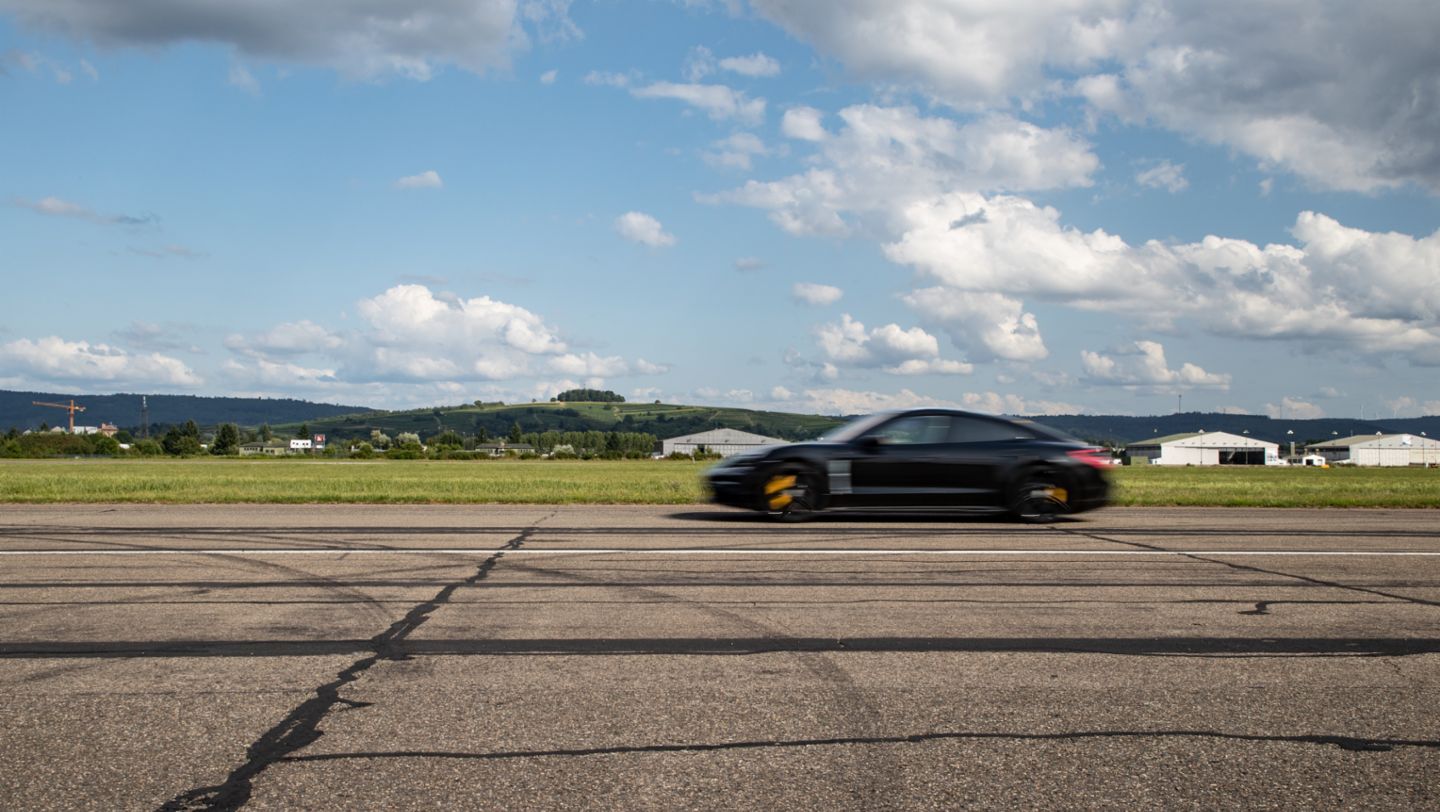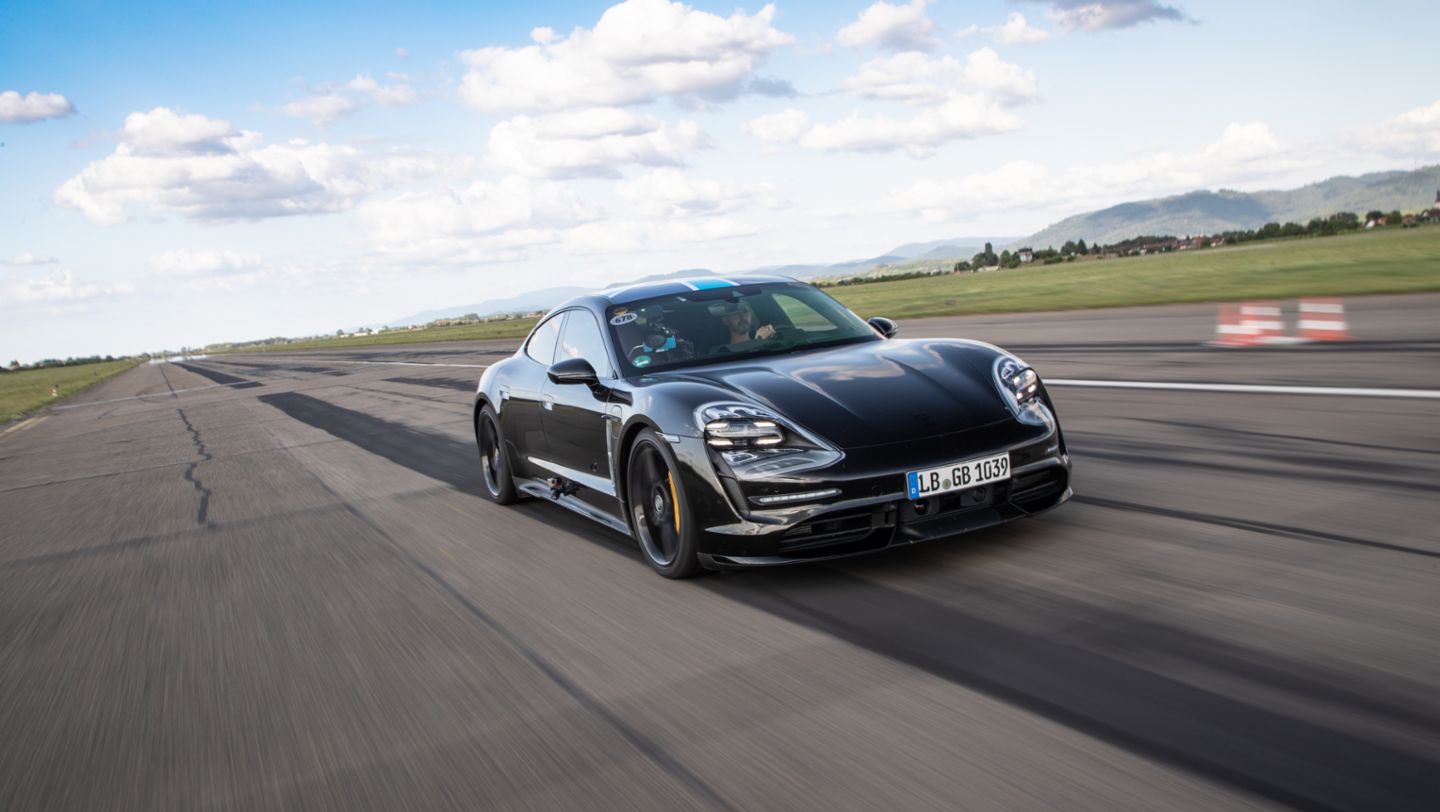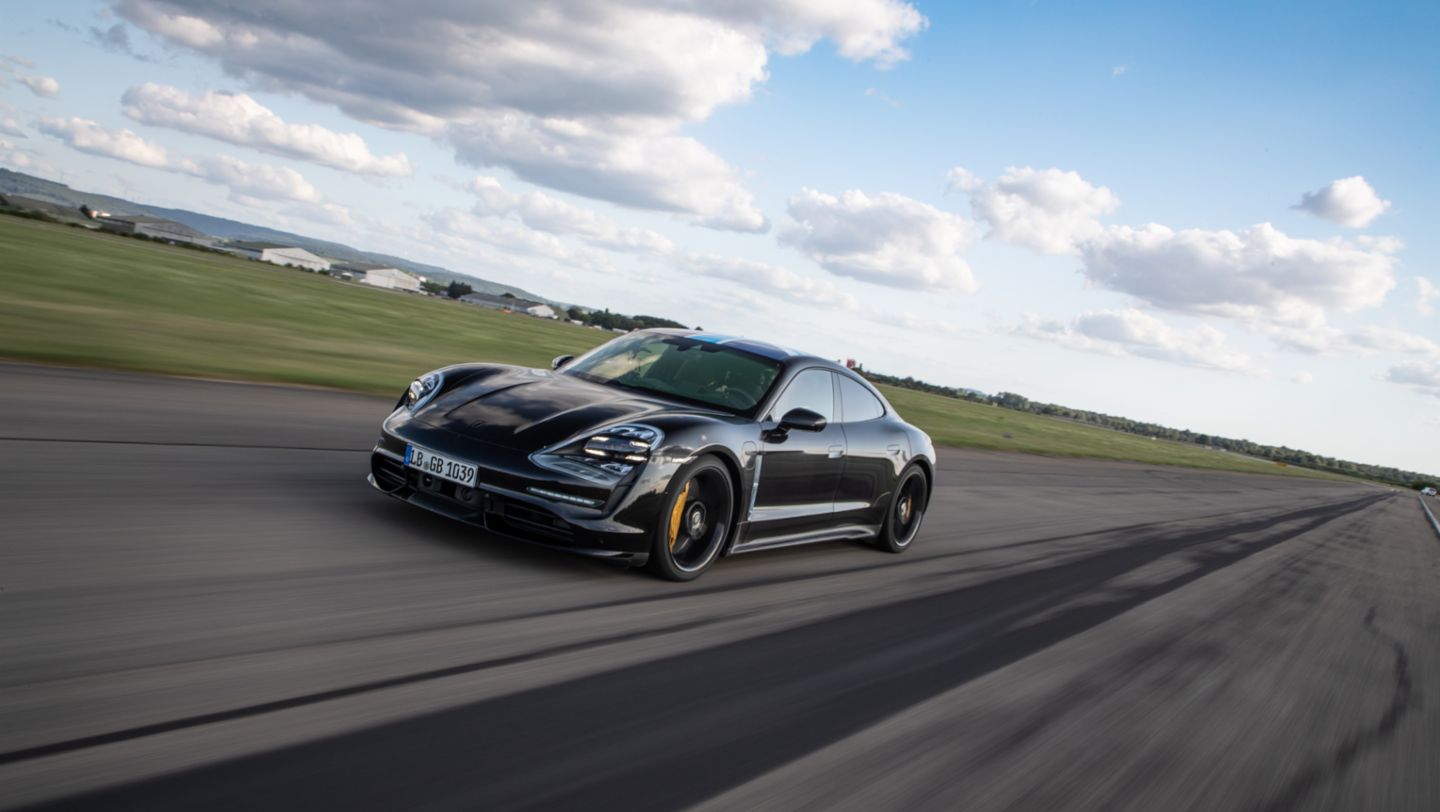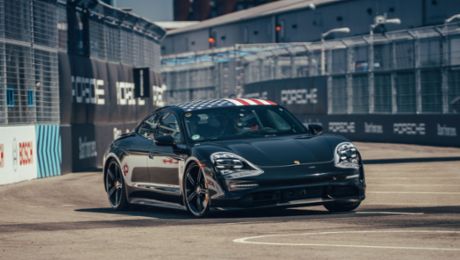Numerous hot laps around a circuit are no problem for the first fully electric sports car from Zuffenhausen.
In an initial test, a pre-series version of this 440 kW (600 PS) all-wheel drive car accelerated from 0–200 km/h 26 times in succession. The Sprint Challenge was held at an airfield in Lahr in southern Baden. Average acceleration times documented on the “Fully Charged” YouTube channel were just under ten seconds. The difference between the fastest and the slowest attempts was just 0.8 seconds.
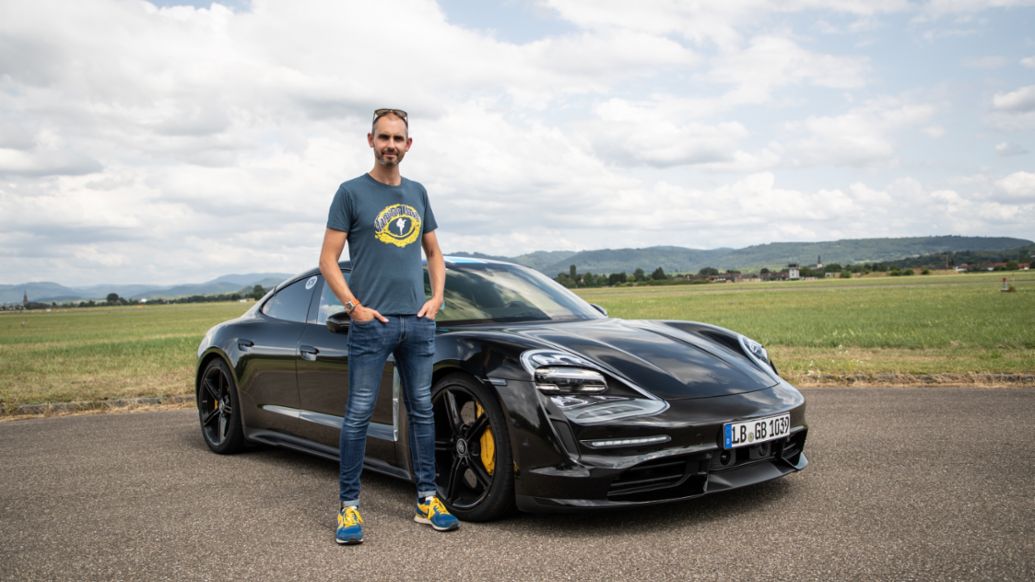
The test runs were carried out in both directions on the airport’s taxiway. The entire strip, about 2.3 kilometres long, was used during the tests. The outside temperature was 28 degrees Celsius.
The Taycan is the first all-electric sports car from Porsche.
A full range of technical innovations in the Taycan guarantees breathtaking acceleration figures, traction power typical of a sports car and a superior, permanently-available power output.
- The two powerful electric motors at the front and rear axles are the so-called permanently excited synchronous motors (PSM). They feature a rotor with high-grade permanent magnets that generate a natural magnetic field. As a result, the rotor moves in sync with the magnetic rotating field of the stator, hence the name PSM. A pulse inverter specifies the frequency of the rotating field in the stator, therefore determining rotor speed. The design, function and excellent thermal behaviour of permanently excited synchronous motors allow them to deliver the high performance typical of Porsche.
- A special feature of the Taycan’s electric motors is the so-called hairpin winding, in which the solenoid coils of the stator consist of rectangular rather than round wires. The wires are bent, and before they are inserted into the stator’s laminated core their shape looks like a hairpin – hence the name “hairpin”. The open ends are welded together using a laser beam. Hairpin technology makes it possible to pack wires in a more condensed way and therefore integrate more copper into the stator. This increases power output and torque at the same level of volume. Another important advantage for a high-performance car like the Taycan is that a hairpin stator can be cooled considerably more efficiently.
- The Taycan is the first production vehicle with a system voltage of 800 volts rather than the normal 400 volts for electric cars. Among other things, this delivers continuous high power and charging capacities to enable both fast driving and fast loading, while also reducing the weight of the high-voltage cabling.
- In combination with the drive train concept (PSM and 800-volt technology), thermal management ensures a high reproducibility for when power is demanded. The cooling system is tailored to the needs of the individual vehicle and enables the performance, which is typical of a sports car, to be achieved multiple times in succession when required. Porsche has achieved a wide spread between performance and range. In winter, intelligent thermal management also enables efficient and demand-oriented heating functions.
The Taycan has a top speed of over 250 km/h. It accelerates from 0–100 km/h in significantly less than 3.5 seconds and its lithium-ion battery has a gross capacity of around 90 kWh. The Taycan will be presented in September and launched onto the market at the end of the year.
The test track: Lahr airport
Opened in 1913 and intended as a Zeppelin airfield, Lahr was used after the Second World War as a military airfield, initially by French troops and from 1967 by Canadian NATO troops. ADAC Südbaden (a regional division of a German automotive association) has been using the facility for motorsports events ever since the latter withdrew in 1994. The Regio-Ring, as it is known, held Formula and touring car races between 1996 and 1998, sometimes drawing crowds of over 30,000 spectators.
Today the airport is situated directly off the A5 motorway from Karlsruhe to Basel and used for business and freight flights, as well as by the automotive industry for test drives and measuring runs.

